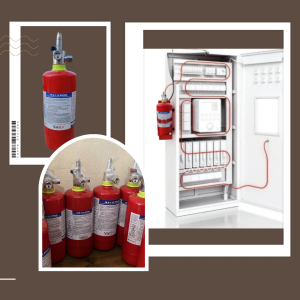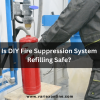![]()
Fire Immuniser
+91-7829629111
Email: info@variex.in
Varistor Technologies Pvt. Ltd.
Block-1, First Floor, Ardente Office One, Hoodi Circle, ITPL Main Road, Bengaluru, Karnataka 560048, IN
Direct Low Pressure System
The Direct low pressure fire suppression systems represent an innovative approach to fire safety, delivering targeted extinguishing agents directly to the source of a fire at a controlled low pressure. These systems are engineered to swiftly detect and suppress fires, mitigating damage and safeguarding lives in various environments including commercial, industrial, and residential settings.
- Extinguishing Agents: Direct low pressure systems can utilize various extinguishing agents such as water, inert gases like nitrogen or argon, and clean agents like FM-200 or Novec 1230. The choice of agent depends on factors such as fire risk, environmental impact, and regulatory compliance.
- Storage Tanks: These systems feature storage tanks or cylinders where the extinguishing agent is stored under pressure. Tanks are sized based on the volume of the protected area and the required duration of fire suppression.
- Piping Network: A network of piping distributes the extinguishing agent throughout the protected area. The piping is strategically installed to ensure comprehensive coverage and efficient delivery of the agent to fire-prone areas.
- Nozzles or Sprinkler Heads: Nozzles or sprinkler heads are installed along the piping network at predetermined locations. These devices release the extinguishing agent when triggered by heat or smoke detection systems, effectively suppressing the fire.
- Detection and Control Systems: Heat or smoke detectors, along with control panels, are integral components of direct low pressure systems. These systems monitor the environment for signs of fire and activate the suppression system automatically when a fire is detected. Control panels provide operators with real-time status updates and manual control options.
Advantages:
- Rapid Response: Direct low pressure systems offer rapid fire detection and suppression, minimizing fire damage and reducing the risk to occupants.
- Localized Application: By delivering extinguishing agents directly to the fire source, these systems minimize collateral damage to surrounding areas and sensitive equipment.
- Efficiency: Low pressure delivery ensures optimal distribution of extinguishing agents, maximizing their effectiveness while minimizing consumption.
- Environmental Considerations: Some direct low pressure systems utilize environmentally friendly extinguishing agents, reducing their impact on the environment and complying with regulatory standards.
- Flexibility: These systems can be customized to meet the specific needs of different environments, including areas with unique fire hazards or sensitive equipment.
Applications:
Direct low pressure fire suppression systems find application in a wide range of environments, including:
- Commercial buildings such as offices, retail stores, and restaurants.
- Industrial facilities including manufacturing plants, warehouses, and data centers.
- Residential properties, particularly high-value homes and apartments.
- Specialized environments such as server rooms, electrical substations, and museums.
In conclusion, direct low pressure fire suppression systems offer an effective and efficient means of protecting lives and property from the devastating effects of fire. With their rapid response capabilities, targeted application of extinguishing agents, and environmental considerations, these systems represent a vital component of comprehensive fire safety strategies in modern buildings and facilities.
Frequently Asked Questions
A direct low pressure fire suppression system is a specialized method designed to quickly detect and extinguish fires by delivering extinguishing agents directly to the source of the fire at a controlled low pressure.
These systems typically consist of storage tanks, piping networks, nozzles or sprinkler heads, and detection/control systems. When a fire is detected, the system releases extinguishing agents through the nozzles or sprinkler heads, effectively suppressing the fire.
Various extinguishing agents can be utilized, including water, inert gases like nitrogen or argon, and clean agents like FM-200 or Novec 1230. The choice of agent depends on factors such as fire risk, environmental impact, and regulatory compliance.
These systems are commonly installed in commercial buildings, industrial facilities, data centers, server rooms, warehouses, healthcare facilities, and residential properties. They are particularly suitable for protecting areas with sensitive equipment or unique fire hazards.
Some direct low pressure systems use environmentally friendly extinguishing agents, reducing their impact on the environment and complying with regulatory standards. These systems are engineered to provide effective fire protection while minimizing harm to the environment.
Final Say
We at VariEx.in or Variexonline.com have mastered the art of designing, installing, inspecting, and fixing automatic sprinkler systems with the help of our in-house team, which is capable of delivering the fire sprinkler services you need, whether large or small and at affordable cost.
To schedule a fire sprinkler installation, or you think our services could benefit your commercial property, contact us online or give us a call at, 7829629111










